A Complete Guide On Growing Creeper And Climber Plants
Greenery is a contagious thing that spreads around within a few days of propagating your first plant, and maybe that’s why nature has bestowed us with so much versatility when it comes to growing lovely plants! Several delicate plants trailing along walls with fragile elegance often catch our attention; these plants are known as creepers & climbers. They are perfect to sprinkle grace around your garden with their balanced elegance. Let’s learn more about them to enjoy their company in our gorgeous gardens.
What Are Climber Plants And Creeper Plants?
The fundamental characteristic that differentiates the creepers and climbers from the rest of the greenery is that these plants grow with weak stems that can’t handle their weight, which is why such greenery requires some sort of support to grow vertically or horizontally.
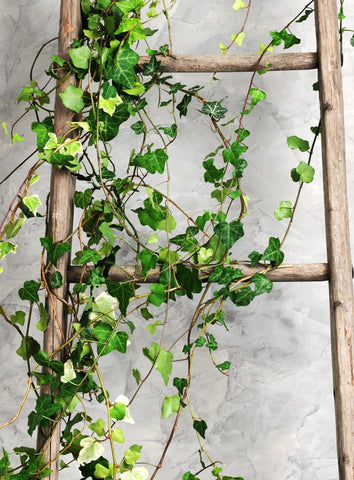
You must have heard of several creeper plants names & climber plants names that require a trellis, wall, plant support cage, etc., to blossom into beauty. Without firm support, they can’t stand erect against their delicate bodies. However, it is pretty simple to train them to climb walls and other support systems.
What Is The Difference Between Creepers VS Climbers?
Creepers differ from climbers in the inclination of their growth. For instance, creeper plants in India take on a horizontal approach to spread their beauty, while most example of climber plants follow a vertical growing pattern. Due to their growing approaches, the former tends to stay bunched up in a particular spot, while the latter has the capacity to spread out in large volumes.
How To Grow Creepers And Climbers In India?
Growing delicate greenery can seem intimidating as they look like one can easily mess with their growth. However, to be true, their propagation is simple, and once you catch them glowing in your garden, they will soon become a must-have. Read further to know everything about growing the best creeper plants and different types of climber plants:
1. Location
First things first, the best part about growing these dangling vines is that they are pretty flexible in the choice of residence. One may propagate them indoors in the living room or outdoors on the terrace; from compact balconies to vast backyards, this greenery will readily accept every home, given you handle it with proper care & attention.
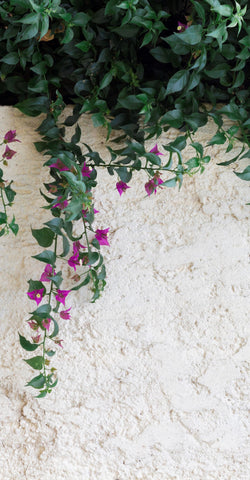
2. Types Of Creeper Plants For Home
Creeping plants is a broad term that includes all kinds of greenery that have a weak-stemmed base and grow horizontally. They are further grouped into the following categories:
A. Creeper Flower Plants
Several creeping greenery offers us the opportunity to catch the combined grace of delicate branches and soft-hearted blooms. Such plants take an elevation of about two inches, spreading ten to twelve inches horizontally.
B. Moss-like Creepers
These are great at imitating moss structures and, thus, quickly become the highlight of rock gardens. They grow in a lowkey manner, staying compact, with rich & bright greenery.
C. Curtain Creepers
It is more of a variant and not a category, as curtain creepers use the Hindi term ‘Parda Bel’ in India. As the name implies, these wall creeper plants dangle like a curtain and can be a great addition to balconies.
D. Creeper Fruit Plants
Several creeping varieties blossom with pretty blooms that often transform into delicious fruits. Strawberries, watermelons, etc., are a few examples.
3. Types of Climber Plants For Home
While climbing greenery is overall characterized as delicate plants that require support to climb on walls, trellises, etc., these are bifurcated into groups based on their climbing tendencies:
A. Tendrils
Climbers like grapes, sweet peas, etc., grow with tiny outgrowths along the stem called tendrils. These tendrils keep dancing in the air until they grab something to coil around.
B. Twiners
Such greenery is bereft of any other outgrowths like tendrils, so it uses its leaves or stems as tendrils - either the leaves curl onto the support or the stems do!
C. Scramblers
Climbing roses are the perfect example here, as scramblers are the climbing plants that use their thorns to get on board the climbing journey, even though they have flexible stems.
D. Adhesive Pads
Several climbers like Boston ivy have in-built adhesive pads peeking out from the stems in the form of tendrils. They use adhesive pads to stick on any support system to crawl upwards and sideways.
E. Stem Rooms
Plants like English ivy grow stout roots emerging from their stems that assist them to establish a firm grip on various surfaces.
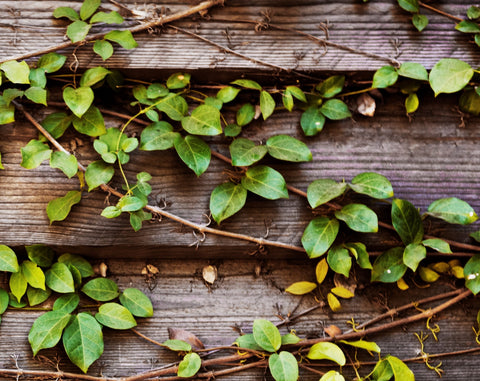
4. Support System
As we know by now, these plants are a bit fragile on the stems and branches, so they face a problem in standing straight, which is why it becomes essential to train them over a trellis, wall, support cage, moss stick, mesh wire, etc. These supporting structures for climbers are readily available on the online gardening market. One may also pick their material, shape, and color to make them complement the ambiance.
5. Care Instructions For Growing Creepers & Climbers
➤ Ensure setting up a firm support structure for your creeping and climbing plants, so while you shop for these delicate plants online, don’t forget to scroll through the support structures as well because they are pretty necessary for growing these plants.
➤ Be it indoor creeper plants or climbing vegetable plants, all of them require rich and nourished plant soil with the perfect pH for them to flourish. If the natural soil found in your lawn is not up to the mark, add soil-enriching components like cocopeat & coco chips to give the earth a natural boost.
➤ Usually, these plants love total sun exposure during the morning hours with partial shade as the heat rises. However, with so many varieties in the bag, it’s better to check their individual preferences and cater to them accordingly.

➤ This goes without saying that hydration is the most critical part of growing these beauties. You don’t wish to overdo and drown them in a pool or underwater and let them suffocate with thirst. The right way to water them is by checking the soil’s dryness and making it a point to keep them moisture-laden at all times, especially in the initial growth phase.
➤ Mulching the ground-propagated creeper & climber varieties is yet another way to make the soil more potent by ensuring regular moisture and airflow.
➤ Also, some of the fast-growing varieties tend to spread and sprawl when you blink a thousand times, so it is essential to watch out for fast growth and trim the plants as and when needed. Of course, it’s up to you how vast you wish to let these gorgeous beauties reach! Remember, the indoor ones will also require regular grooming sessions to look neat, beautiful, and contained!
➤ A friendly reminder: These plants are super easy to grow, and some variants are even very low-maintenance; however, understand that many factors have a hand in their growth, like climate, soil, plant species, location, etc. Keep all external factors in mind and mold your care guidelines accordingly.
6. Container Gardening
It is a myth that creepers & climbers can’t be grown in floor planters. One may quickly propagate these in containers of one’s choice, placing the cute plastic pots on the balconies or on the terrace! For instance, propagating curtain creepers in containers on the balcony will naturally give the impression of a curtain once the plant matures. Just pick a large-sized container to let the roots spread with joy!
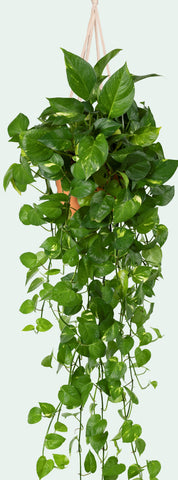
7. Creeper Plants Examples
➔ Aparajita
➔ Rangoon creeper
➔ Curtain creeper
➔ Railway creeper
➔ Mock strawberry plant
➔ Irish moss
➔ Pussytoes
➔ Watermelon
➔ Begonia
➔ Bougainvillea
8. Climber Plants Examples
➔ Venusta
➔ Heart vine
➔ Jasmine climbers
➔ Thunbergia
➔ Ylang-ylang vine
➔ Pipevine
➔ Morning glory
➔ Climbing rose
➔ Passionflower vine
➔ Climbing hydrangea
What Are The Benefits Of Growing Creepers & Climbers?
Propagating creeping and climbing plants is more significant than you think! Apart from bringing diversity to your lawn, they will also prove beneficial in the following ways:
1. Gorgeous Surroundings
These plants are a sure-shot method to enhance the ambiance with versatile and unique plants that are super soft, delicate, flexible, easy-growing, and pretty! They will make the surroundings bounce with joy, greenery, and positivity.
2. Space Management
Urban dwellers often complain about how they could use some greenery in city jungles. The good news is that creepers & climbers are perfect at managing space, as creepers grow in a controlled manner with a horizontal spread, and climbers take the vertical approach. Both of these types of plants are immaculate space savers, so one can welcome them in backyard-less homes.
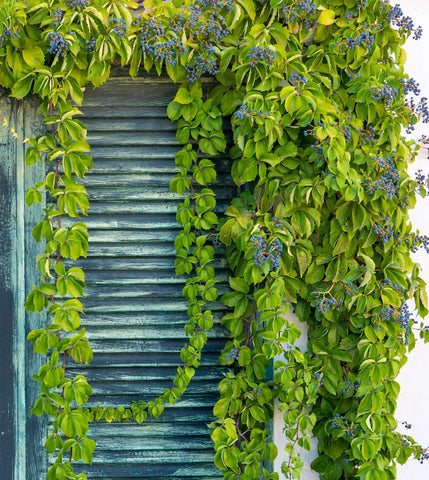
3. Welcome The Wildlife
This delicately beautiful genre of greenery is big on welcoming wildlife home. Once you propagate some of these, be ready to host the most beautiful wildlife in the form of bees, birds, and butterflies. You can also set up some bird houses and bird feeders to comfort your wild guests!
4. Decor Element
Fed up with the old ways of renovating those shady walls in the backyard? Well, train a climbing vine over the wall to let your visual buds compliment you on your decor choices! Also, nothing looks more aesthetic than a beautiful climber dangling from the hanging planters near your living room!
5. Blessed Environment
Be it climber plants vegetables, or flowering creeper varieties, all of them will aid in creating a blessed and joyous atmosphere just by their presence. Imagine entering home; the air feels purer, the vibe feels genuine, and the temperature feels down! What more can you ask for, right?
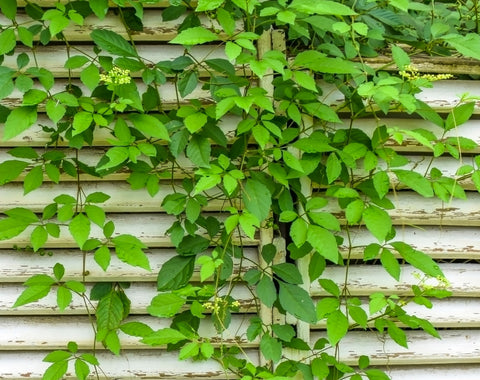
Conclusion:
Creepers and climbers are a unique and uplifting way of adding more greenery to any ambiance. These plants can quickly take over your garden and become the spotlight, as they always deserve to be! What’s important is to treat them with the right conditions, and they will revert with the bounty of their beauty!
What’s even more interesting is their availability on online gardening stores like ours that sell these gorgeous plantations at the most affordable rates in India. Eliminate the need to visit an offline market by ordering these stunning plants through our online website. Don’t worry; once delivered, the plants will look as fresh as they do in the nurseries. Have a joyful gardening experience!
FAQs About Growing Creepers & Climbers In India
Ques: Which Is The Best Season For Growing Creepers & Climbers?
Ans: There is no best period for growing them, as it depends on the plant species. While some of them love the warmth of summer, others might prefer the calm of autumn.
Ques: How Fast Do Creepers & Climbers Grow?
Ans: The spread of creeping and climbing plants varies from one specie to another. For example, star jasmine will flourish faster than the pink trumpet vine.
Ques: How Often Should I Trim My Creepers & Climbers?
Ans: As a general rule of grooming sessions, one may trim these plants whenever one spots dead growth. But overall, grooming them to control their abundant form is something that will differ from plant to plant. While some of them require pruning twice a year, others can stay without pruning for a couple of years.
Ques: Where Can I Grow Creepers & Climbers?
Ans: These plants are suitable for every location, from outdoors to indoors. One may settle them in the backyards, introduce them to the balconies, and make them a part of rooftop gardening. When indoors, these can be grown in the living rooms, near the windowsills, above the coffee tables, etc.
Ques: Is It Essential To Use A Trellis For Climbing Plants?
Ans: Yes, a robust support structure, like a trellis, mesh wire, moss pole, etc., is vital for their growth. These plants have a weak stem structure that doesn’t permit them to stand erect, thereby increasing the requirement for a support system.


